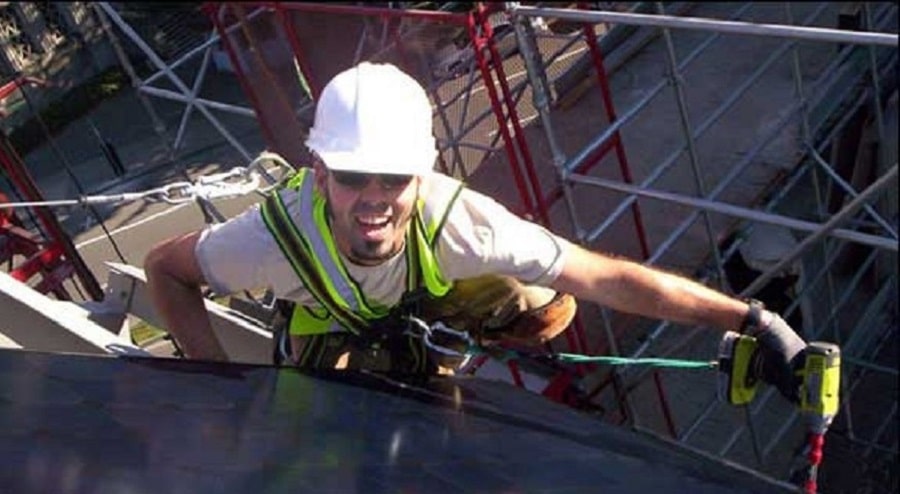What Is The Difference Between OSHA And ANSI?
Posted by Howie Scarboro - CEO Fall Protection Distributors, LLC on Jan 29th 2024
Introduction
Navigating the world of fall protection regulations in construction can feel like deciphering hieroglyphics. But fear not, because we are going to break down the basics for you! Understanding the distinct roles of two key players, OSHA and ANSI, empowers you to create a secure and compliant work environment for your crew. This very common question is asked everyday by contractors, workers, and project managers. The ever-changing world of safety and fall protection regulation can be overwhelming. Let's go through the basic framework of how two organizations work together to keep jobsites safe.
Malta Dynamics has released an excellent video explaining the differences between OSHA and ANSI.
1. OSHA: The Enforcer Setting the Ground Rules
Imagine OSHA as the construction site sheriff, enforcing safety and health standards through regulations. Their mission is crystal clear: guarantee "safe and healthful working conditions" by setting the legal minimum requirements. For fall protection, these requirements are outlined in regulations 29 CFR 1926.501 and 1926.502. Remember, ignoring these golden rules – guardrails at 6 feet or higher, personal fall arrest systems (PFAS) when needed, and proper training – can lead to hefty fines and project shutdowns.
The sobering reality is that falls were the third leading cause of construction worker deaths in 2021, claiming 390 lives. This grim statistic is why OSHA prioritizes fall prevention in their "Fatal Four" hazard list.
2. ANSI: The Collaborative Council of Best Practices
Unlike OSHA, the non-profit ANSI isn't the enforcer, but rather the collaborative safety council. Think of them as the industry think tank, bringing together experts to establish best practices for equipment and procedures. Their Z359 series of standards delves deeper than OSHA regulations, providing nitty-gritty details on harnesses, lanyards, anchorages, and rescue systems. While following these standards is voluntary, they're often the foundation for OSHA regulations and widely considered industry best practices.

3. The Synergy: How OSHA and ANSI Work Together
Here's the exciting part: OSHA and ANSI aren't rivals, but partners in creating a comprehensive safety net for construction workers.
OSHA Borrows the Best:
Sometimes, OSHA sees something valuable in the ANSI rulebook and incorporates it into their regulations, making it legally binding.
The General Duty Clause:
This clause empowers OSHA to cite employers for violating recognized industry standards, even if not explicitly mentioned in their regulations, encouraging adherence to ANSI best practices.
Handshake Agreement:
A formal memorandum of understanding fosters cooperation and information sharing between OSHA and ANSI, ensuring their efforts complement each other. In essence, this document lays out the framework between the two agencies.
This agreement between the Occupational Safety and Health Administration (OSHA) and the American National Standards Institute (ANSI) outlines their collaboration in developing and promoting workplace safety and health standards.
The latest OSHA updates for 2024 are further discussed in a recent article.
Key points:
ANSI assists OSHA: by providing technical support, developing training materials, and participating in international standards discussions.
OSHA assists ANSI: by sharing research reports, participating in standards committees, and providing updates on regulations.
Mutual goals: enhance the national consensus standards system, improve US competitiveness, and promote safety and health.
Communication and collaboration: through a working group to implement the agreement.
Essentially, both parties leverage their expertise to create comprehensive and effective safety standards for workplaces.
Additional notes:
- OSHA enforces mandatory standards, while ANSI standards are voluntary but widely adopted.
- The agreement ensures both organizations consider each other's perspectives during standard development.
- Collaboration extends to international standards-setting bodies.
4. Your Crew's Safety: The Ultimate Goal
Remember, both OSHA and ANSI standards are crucial for fall protection. While OSHA sets the legal baseline, ANSI offers more detailed guidance and industry-approved best practices. By understanding their roles and staying updated, you can create a safety culture that prioritizes your crew's well-being and keeps your projects running smoothly.
Safety isn't just about checking boxes – it's about building a culture where everyone goes home safe and sound.
By leveraging the combined knowledge of OSHA and ANSI, you can make safety a top priority on your construction site and ensure a brighter future for your crew.

